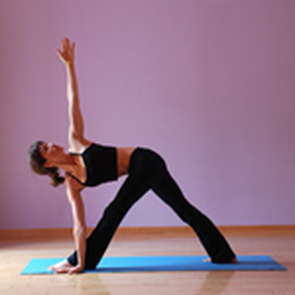Finding Balance in my workouts has been a chore at time, but I must say it's paying off to stay consistent with both my dietary intake and my gym workouts.
I was talking with our family Chiropractor Dr. Ryan Nienaber of Boones Ferry Chiropractic and Massage on Monday and we were comparing workouts that actually stress the muscles to encourage growth. Dr. Nienaber suggested that I should add a fly motion exercise into my chest workout when I'm taking my chest to failure. Oh damn does it make a difference. I have been sore as hell.
I know that I have been doing the work in the gym, but knowing that simple changes to your daily workout routines can really make such a difference. It's not just my chest that's sore, but my front delts and triceps and aching for a break. No break I can do that on my day off. This little change that Dr. Nienaber was generous to share has made me realize he's much more then a Chiropractor, but a doctor of results and solutions. I'm blessed to have such an inspirational person in my life. Thank you Ryan for all your advice and motivation.
I'm surely now at a new level in my fitness journey and I look forward too what my next workout will bring. I enjoy structure, but I love results much more.
So the point I'm trying to make today is variety and commitment is the solution to your workout lows. Mix it up and mix it up often to see and feel the results that you desire. The human body can take a punishment day in and day out. We're only limited by what our mind limits us too. Get advice from people in your life that are a living example of results.
I have read so many books but the best knowledge I gain is from people that provide support, motivation and inspiration through doing the work themselves.
March is coming to an end and I'm looking forward to hitting the scale to see how all my hard work has paid off and it's nearly time to post my next progression picture.
I'm feeling wonderful and my clothes are starting to fit me as they should. I know that I've gain a significant amount of muscle mass and as for how much fat loss I've melted away has become harder to measure. I don't have the luxury of high tech instruments that give me an accurate measurement of my true BMI, I have to make an educated, scientific guess.
Keep reading great news in closing in for me. Wish me luck in this journey and let me know if i can be of any support to anyone who needs help with creating a healthier life for themselves.
 By Sarah Court Exercise.comWhen yoga was first created hundreds of years ago, practitioners didn't have the benefit of modern science to explain why it worked—they just knew it did. Nowadays, we can look to science to help us understand how yoga gives us relief from stress. What Happens When We Are StressedTo talk about stress, we have to talk about the hormone cortisol. Under normal conditions, your brain slowly releases cortisol into your body to make your muscles work. However, if you're highly stressed (late for work, deadline due, screaming baby: take your pick), your brain thinks there's an emergency and responds by flooding your body with cortisol. If there really was an emergency, you would need this much cortisol to deal with broken bones, excessive bleeding, and so on. But if you're just stressed out by life, excess cortisol can lead to ulcers, high blood pressure, bone density loss, and can throw your immune system out of whack (why we get sick when we're stressed). It can also lead to weight gain because the body thinks it's responding to an emergency and so holds onto as much fat as it can. READ MORE:
 HEALTHY EATING STARTS AT HOME !By Chrissy Wellington M.S., C.N.S., L.D.N., C.P.T
Feeding your family a healthy dietcan be a challenge. Most people know that fruits, vegetables and whole grains are healthy, and parents hope that their children are getting enough nutrients, however, in the United States children ages 4 to 12 have influenced approximately 128 billion dollars in food spending. And most of that money is spent on junk food. Cartoons such as Tony the Tiger, Shrek, the Simpsons and Spider-Man encourage children to request not-so-healthy items too often.
Ellyn Satter, author of Secrets of Feeding a Healthy Family, says that responsibility lies with parents to supply the what, when and where of eating, while children are responsible for how much they eat.
Here are nine tips to make healthy eating a way of life for your kids, and to make mealtime simple, tasty and conflict free for the family.
READ MORE:

Stress is the emotional and physical strain caused by our response to pressure from the outside world. Common stress reactions include tension, irritability, inability to concentrate, and a variety of physical symptoms that include headache and a fast heartbeat.
It's almost impossible to live without some stress. And most of us wouldn't want to, because it gives life some spice and excitement. But if stress gets out of control, it may harm your health, your relationships, and your enjoyment of life.
Examples of "overload" situations are common in today's world:
- You and your spouse both work full time while you are raising your family. At the same time, your parents are retired, in ill health, and are dependent on your help with shopping and running errands.
- You are a single person living alone, and your salary isn't rising as fast as the rate of inflation. It's getting harder each month to pay the bills.
- You are a divorced parent and share the custody of your children with your former spouse. But the friction between the two of you on matters concerning the children is becoming more bitter and more frequent.
- The expectations and competition at your workplace is becoming fierce. You find yourself coming in early, staying late, and taking on more work than you can handle.
Read More:
 By Meredith WalkerHealth Benefits WithinFrom lowering blood pressure to increasing pain tolerance, the following health benefits can all be discovered within the body. - Blood pressure. A consistent yoga practice decreases blood pressure through better circulation and oxygenation of the body. These two exercises can help lower blood pressure.
- Pulse rate. A slower pulse rate indicates that your heart is strong enough to pump more blood with fewer beats. Regularly practicing yoga provides a lower pulse rate.
- Circulation. Yoga improves blood circulation. By transporting nutrients and oxygen throughout your body, yoga practice provides healthier organs, skin, and brain.
- Respiratory. Like the circulatory system, a lower respiratory rate indicates that the lungs are working more efficiently. Yoga decreases the respiratory rate through a combination of controlled breathing exercises and better fitness.
- Cardiovascular endurance. A combination of lower heart rate and improved oxygenation to the body (both benefits of yoga) results in higher cardiovascular endurance.
- Organs. Yoga practice massages internal organs, thus improving the ability of the body to prevent disease. Additionally, an experienced yoga practitioner becomes better attuned to her body to know at first sign if something isn’t functioning properly, thereby allowing for quicker response to head off disease.
- Gastrointestinal. Gastrointestinal functions have been shown to improve in both men and women who practice yoga.
- Immunity. Yoga practice has frequently been correlated with a stronger immune system. Read this article for more on the immune system and yoga, including some poses that specifically work on areas of immunity.
- Pain. Pain tolerance is much higher among those who practice yoga regularly. In addition to pain tolerance, some instances of chronic pain, such as back pain, are lessened or eliminated through yoga (see below for more on back pain).
- Metabolism. Having a balanced metabolism results in maintaining a healthy weight and controlling hunger. Consistent yoga practice helps find the balance and creates a more efficient metabolism.
Read More...

10 Quick Cardio Moves
1. Jumping JackStand with feet together, then jump, separating legs and raising arms overhead. Land with feet hip-width apart, then jump feet back together and lower arms. 2. Stair RunningRun up a flight of stairs, pumping your arms, then walk down. Vary by taking two stairs at a time. 3. Jumping RopeDo a basic boxer's shuffle or two-footed jump. Stay on balls of feet, not jumping too high off ground, elbows by your sides. 4. Squat JumpStand with feet hip-width apart. Bend knees and lower hips into a squat. Jump in air and straighten legs, lifting arms upward. Land softly, lowering arms. 5. Split JumpStand in a split stance, one foot a long stride in front of the other, then bend knees and jump, switching legs to land and pumping arms in opposition to legs. Alternate legs. 6. Step-UpStep up on a curb, stair, or sturdy bench with one foot, then the other, then down one at a time; repeat. 7. Alternating Knee LiftStanding tall, bring one knee toward your chest without collapsing rib cage; twist opposite elbow toward knee. Alternate sides. 8. Hamstring CurlStanding tall, step sideways with right foot, then bring left heel toward buttocks; pull elbows in to sides. Alternate sides. 9. Jog in PlaceJog in place, lifting knees up; swing arms naturally in opposition. Land softly, ball of foot to heel. 10. Side-to-Side LeapPlace any long, thin object (such as a broom) on floor. Leap sideways over object, landing with feet together. Find more stories like this on diets, fitness, healthy eating and recipes at Shape.com http://www.active.com/fitness/Articles/10-Quick-Cardio-Moves.htm?cmp=17-7-338
 Self-esteem in the athlete
Patrick Cohn explains why athletes must learn to separate self-esteem from their level of performance in sports
Many athletes and performers I work with often wrongly determine their self-worth by how successful they feel about their sport. When an athlete performs well or feels successful, he or she can feel good about him or herself. However, the opposite is also true: despair and low self-esteem results when this person does not perform well or view him or herself as a failure.
Check Out more for Zuzana Light on www.bodyrocks.tv
By Steven Aitchison Of http://www.stevenaitchison.co.uk/blog/ A few days ago, I filled out a VIA Survey of Character Strengths by Martin Seligman (Positive Psychology) and the results showed I was moderately optimistic. This gave rise to the topic ‘50 Ways To Build Your Optimism’. Optimism is simply anticipating the best possible outcome in any event. In no particular order here are ‘50 Ways To Build Your Optimism’. - Be realistic about your expectations.
- Accept the past, manage the present and work hard towards the future.
- Seek for a ray of light/hope in a negative situation. It’s a bit difficult considering all you are going through, but there’s always an opportunity lurking somewhere in the dark.
- Utilize what you have for now and aspire to grow in every area of your life, remembering you can only swallow food in bits and pieces before taking another big bite.
- Be authentic, be yourself and stop hiding behind the MASK of pretence.
- Get infected by being in a network or company of constructive people, because optimism is positively contagious.
- Have a dream, believe in it and do everything possible under the sun to run with it.
- Accept you are human with imperfections.
- Express love towards other people.
- Be selective of what you read, hear or watch from the media. Excessive media influence could dampen your spirits.
- Develop the habit of using positive affirmations constructively.
- Listen to music. It has the ability to make your mind wander a bit. Come on!!! dance to the groove; sing even if it won’t get you auditioned for XFACTOR.
- Exercise regularly. Taking care of your body mind and soul builds courage and resilience to face the pressures of the world.
- Avoid living in self denial.
- Try as much as you can to stay calm when overwhelmed with the issues of life.
- Be thankful for everything you have, who you are, the people around you…..
- Develop a sense of humour. Cultivate the habit of laughing or cracking jokes.
- Spoil yourself and make sure you enjoy doing so. Go on vacations, get a massage, eat out……..
- Improve yourself at the slightest opportunity you have. Your capacity to succeed in life will depend on your personal drive to take each opportunity as stepping stones to fulfilling your life long dream.
- Be gracious enough to accept things you cannot change. There will always be things you cannot change no matter how hard you work at it.
- Reflect and focus on the good things that have occurred in your life.
- Create a positive attitude.
- Don’t harbour any form of resentment particularly with issues from the past.
- Know when to call it quits. Some things aren’t just worth the effort and time you put into it.
- Occupy yourself with things that bring out the best in you i.e. family, children,friends, travelling, reading etc
- Focus on creating solutions and not drowning in problems.
- Be a positive role model to your children, friends, family etc. Be a source of inspiration to people who look up to you.
- Be good at your job demonstrating your useful skills.
- Have a hobby to keep you occupied. It could be a form of sport, reading, writing etc.
- Improve your physical appearance when necessary.
- Get some rest because it is required to put things in perspective.
- Learn something new in order increase your knowledge.
- Be passionate. Embrace life and everything it stands for with love and passion.
- Show persistence in all your endeavours because it’s one of the keys to happiness.
- Worry less because it reduces the level of your anxiety..
- Celebrate the successes of other.
- Be determined and motivated to excel in all you’ve set out to do.
- Learn to try out new things.
- Maximize your success and give attention to your failures remembering that failures are learning experiences that yield positive results if handled properly.
- Set a goal so that you will have something to look forward to when the going gets rough.
- Practice the habit of forgiveness.
- Avoid clutter. Be organized not only with your things but also with your thoughts and your plans.
- Create a positive environment in your home or office.
- Read several motivational stories, blogs,quotes….
- Think positively about who you are.
- Develop a strong ambition.
- Visualize happy thoughts. Imagine a picture in your mind what you want to achieve and how you can achieve them. Oftentimes, what you create in your thoughts give birth to what happens in reality.
- Walk tall, with your head high up exhibiting confidence.
- Smile as often as you can. It has a way of showing your sincerity.
- Have a blend of optimism in the way you pick, choose and say your words.
http://www.stevenaitchison.co.uk/blog/2009/10/16/50-ways-to-build-your-optimism/
 By Patrick Cohn, Ph.D. and Lisa Cohn Why do athletes sabotage their own success? You might assume this problem relates to a "fear of success." Fear of success does cause athletes to self-destruct. But fear of success is very rare compared to fear of failure. Both of these fears cause athletes to "get in their own way"--experiencing fear, anxiety, tension and worry about scoring and achieving results. However, these fears come from different sources. You Can't Always Get What You Want Athletes develop a fear of failure when they worry about not getting what they want and have worked hard to obtain, such as winning a championship. They develop fear of success when they worry too much about what comes with being successful in their sport. Most athletes experience fear of failure and not fear of success. Fear of failure manifests in many ways in sports. Athletes who are anxious or tense when competing are often afraid to fail or mess up. Fear of failure can also cause your athletes to try too hard, which leads to "getting in their own way" mentally. Diagnosing Fear of FailureIt's not enough to know that athletes experience a fear of failure. What's more important is to know what types of fears hold athletes back. As you can see from the list below, fear of failure often relates to what athletes assume they think others think about them (or social approval). Signs of fear of failure: - Fear of losing a match, game or race. Kids badly want to win and are afraid they won't succeed.
- Fear of negative social evaluation. Athletes fear others will view them as a failure in sports.
- Fear of embarrassment. They're afraid to embarrass themselves in front of others if they don't perform well.
- Fear of letting others down. They do not want to let others down-- coaches, parents or teammates.
- Fear of putting in the effort and not ever getting the "payoff" or not playing to their potential. They don't want their hard work, talent and long
- practices to result in nothing (e.g. wins, trophies, etc.).
- Fear of not performing up to others' expectations. Young athletes worry about not meeting others' expectations.
- Fear of being rejected, losing respect, or not gaining approval.
- Fear of making mistakes and not performing perfectly after having worked so hard.
Helping Athletes Overcome Fear of Failure - To help kids with fear of failure, it's best to understand the specific fear and address it head on. Take fear of embarrassment, for example. If your athletes have this form of fear they worry too much about what others think about them. They need to play for themselves instead of being concerned about what others think.
- Help kids focus on success instead of worrying about failing. Many athletes with fear of failure focus on all the wrong things. They think more about not making mistakes than completing the pitch or gymnastics routine. These athletes need to set small goals that help them focus more on success. One option: kids should see a good result in their minds before they execute it.
- Athletes with fear of failure need to learn how to perform efficiently instead of perfectly. The idea here is that your athletes DO NOT have to be perfect to perform their best. They often want to over control their performance (due to their worries about making mistakes). They need to understand that mistakes are a natural part of sports. The goal is for your athletes to trust in their skills so they can play more freely and feel less tight or controlling.
Award-winning parenting writer Lisa Cohn and Youth Sports Psychology expert Dr. Patrick Cohn are co-founders of The Ultimate Sports Parent. Pick up their free e-book, "Ten Tips to Improve Confidence and Success in Young Athletes." http://www.active.com/mindandbody/articles/How-to-Conquer-Fear-of-Failure.htm?cmp=17-7-323
|











 RSS Feed
RSS Feed







